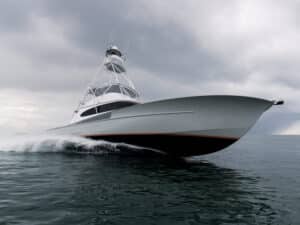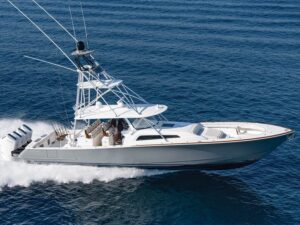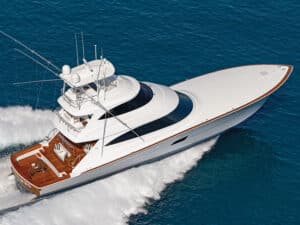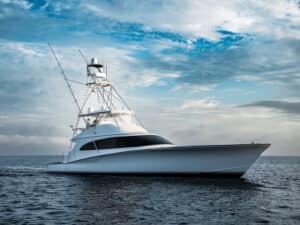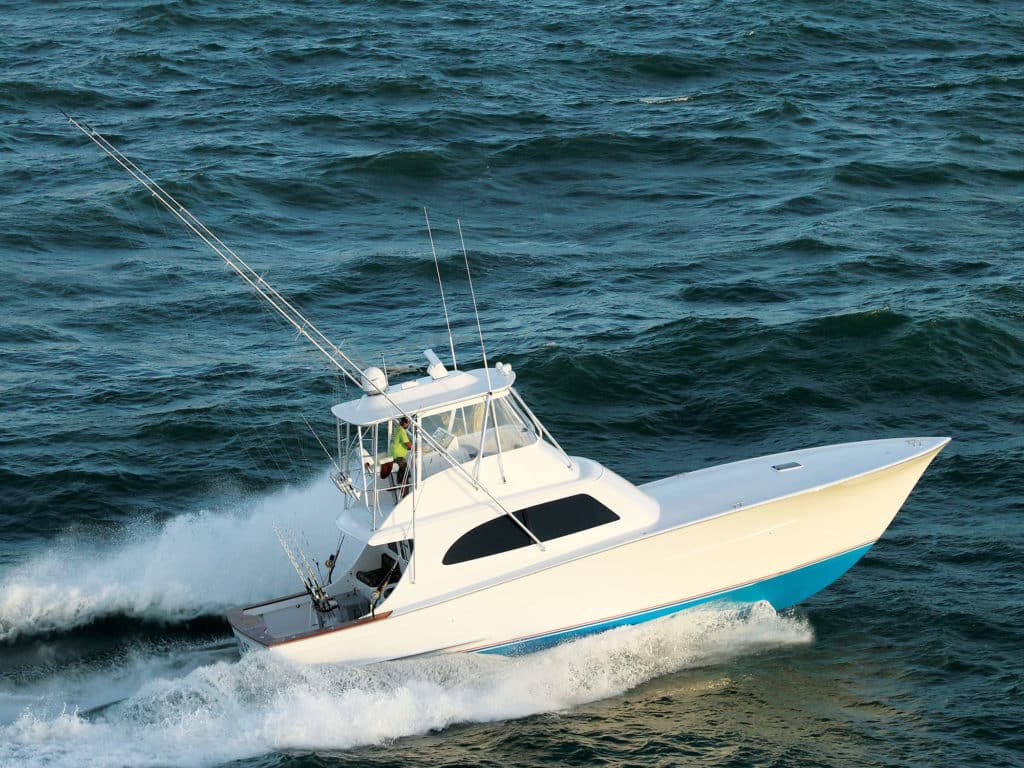
Hot off a win at the Pelican Yacht Club Billfish Tournament in January, Grand Slam, the new 50-footer from Forbes Boat Works, is ready for the summer marlin tournament season in the Bahamas and up the East Coast. Grand Slam splashed in October, and she’s already placed in three of the four tournaments she’s fished — odds that her owner Wallis Higginbotham hopes will continue. “We built her to be the perfect East Coast sailfish boat, and she’s proven to be a darn good one already,” he says.
The Build
Constructed by Irving Forbes in Wanchese, North Carolina, this is the first flybridge he’s worked on since departing from his position at Spencer Yachts in 2011. “We only have the ability to build up to a 57-footer in our shop, but Wallis’ boat was the perfect size for us, and we hope to build another one soon,” comments Forbes. “We built Grand Slam to be a simple fishing boat that’s good on fuel, lightweight and built with high-quality composites.” They did just that, and I looked forward to testing the new — although proven — tournament winner.
Meeting up with Capt. Dave Grubbs and Higginbotham during a beautiful Sunday in New Smyrna Beach, Florida, I was excited to see how she’d perform. Instantly drawing my eyes were the unique camouflage cushions on top of the fish/drink boxes, but it wasn’t long before I began to admire the sheer beauty of the bow flare and the classic lines of the custom Carolina sport-fisher.
Higginbotham says, “We talked to a couple guys, and no one wanted to build a single engine, but Irving [Forbes] set her up a lot nicer than we originally planned.”
Engine Room
Before firing her up for our sea trial, I asked Capt. Grubbs to show me Grand Slam‘s engine room. I admit that I have a soft spot for single-engine rigs, so I was excited to go down below. Ducking through the engine-room access on the port side of the companionway after passing through the salon, I was amazed at the amount of space on either side of the single 1,150 hp Caterpillar C18 ACERT. It’s certainly expected, but the single-engine configuration provides tons of room to move around and work on all systems. “We kept everything simple and clean. We’re all about fishing,” comments Grubbs.
Tucked against the aft bulkhead on the port side is a Seakeeper gyrostabilizer. “We were skeptical about it at first, but I would say it’s reducing about 70 percent of our roll,” says Grubbs. “We’ve fished in some pretty snotty weather this winter, and you can ask our guys — it’s really made a difference in our fishing.” A single 12.5 kW Northern Lights generator is situated to starboard of the engine-room access, just forward of the engine. Simple and efficient: the words of Forbes continued to echo in my head. He achieved that goal and more.
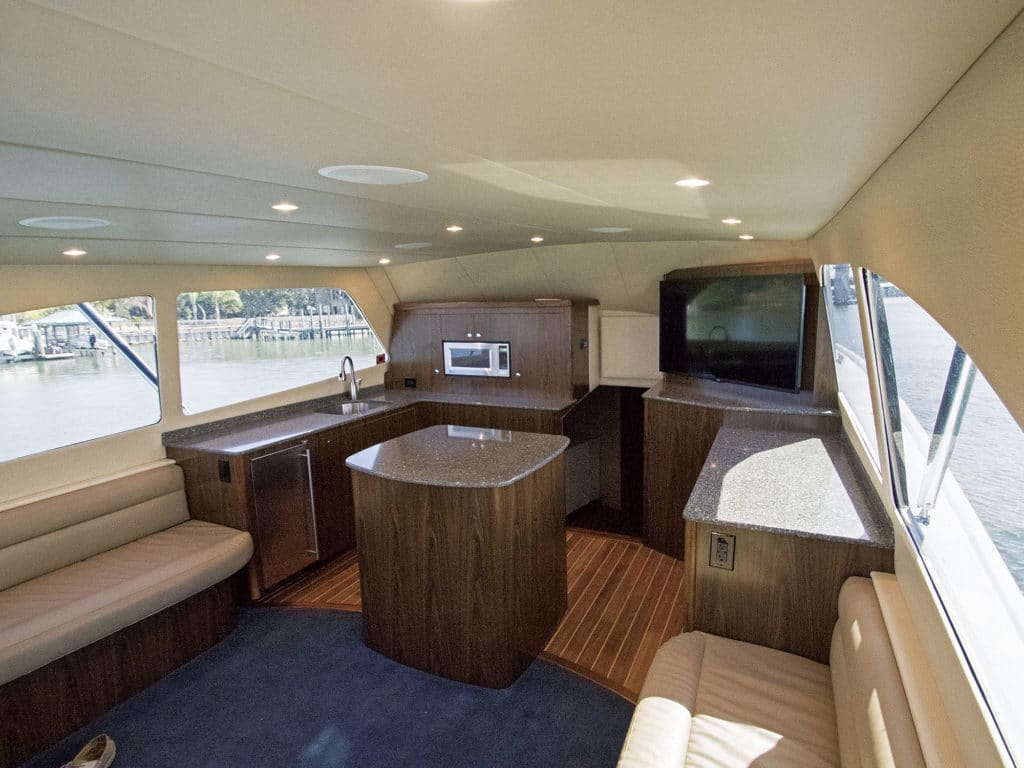
Interior
Designed to allow Higginbotham and his family some space when they are traveling, the layout below is extremely spacious considering they wanted most of their space where they’d spend the majority of their time — in the salon and in the cockpit. The VIP stateroom is located on the centerline all the way forward, and it features all the needed storage space below the berth and in hanging closets for their extended trips they have planned in the Bahamas. The boat’s single head is situated to starboard and has an entry from both the common area as well as the VIP stateroom. In the common area below are two bunks, ideal for Higginbotham’s family.
Out on the fishing grounds or back at the docks, the salon configuration on Grand Slam emulates the clean and simple theme found throughout the other areas of the boat. Two L-shaped couches flank either side of the salon. Countertops forward in the galley are built around a centralized island, perfect for entertaining or just spending time with family and friends. A sink is situated on the port side of the galley, with a microwave placed perfectly within the cabinets forward. Two GE refrigerators were neatly tucked in the island, and the overall interior design creates plenty of storage.
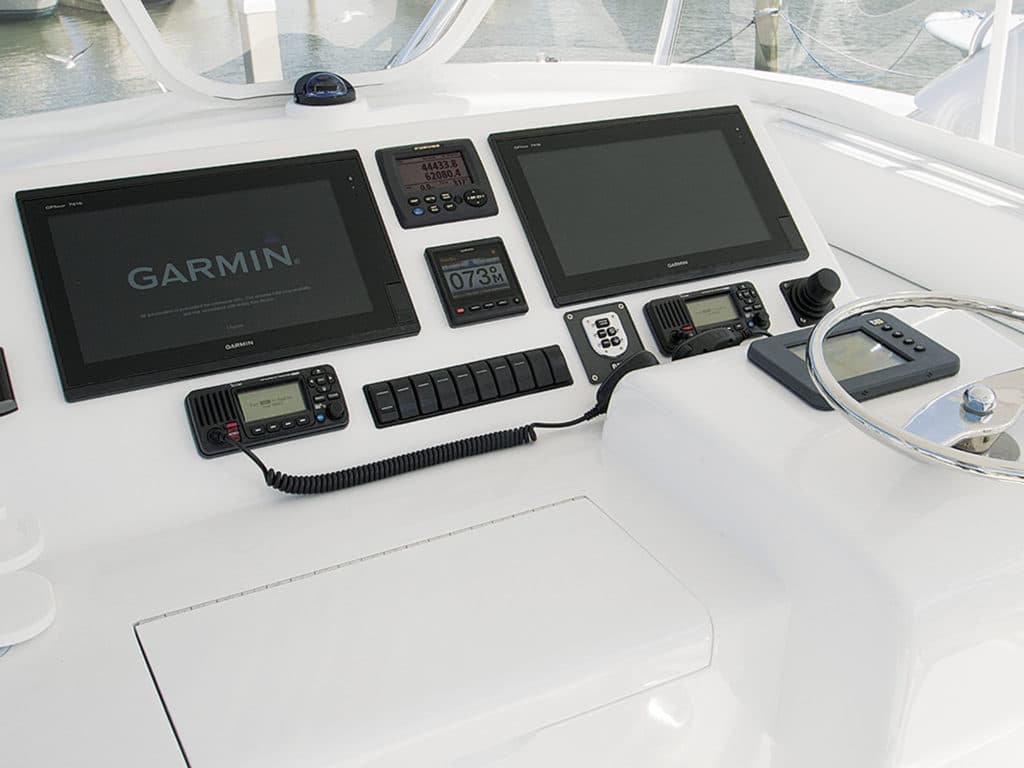
The Essentials
Designed with fishing in mind, Higginbotham had the cockpit set up to optimize the available space, knowing they’d spend a lot of time light-tackle fishing for sailfish and marlin. Rather than building a large mezzanine, they decided to put cushions on top of the two monster fish boxes sitting against the bulkhead on either side of the entryway. Adding roto-molded coolers at the base of each provides a step — the perfect location for ballyhoo and mullet, rather than having the bait boxes tucked up against the rocket launcher.
Accessed from a ladder at the top of the starboard-side fish box, the bridge is designed so no space is wasted. A single Release Marine helm chair is situated behind the helm pod, which beautifully integrates twin Garmin GPSmap 7616 displays, a Garmin autopilot, two radios and all of the engine controls and monitors. Forward of the helm pod is a huge L-shaped couch, and additional seating lies to starboard of the bridge, creating plenty of space for the entire crew to hang out together after a day offshore. Two manual teaser reels are positioned just above the helm chair, and two Rupp outriggers flank either side of the bridge, complimenting Grand Slam‘s beautiful lines.
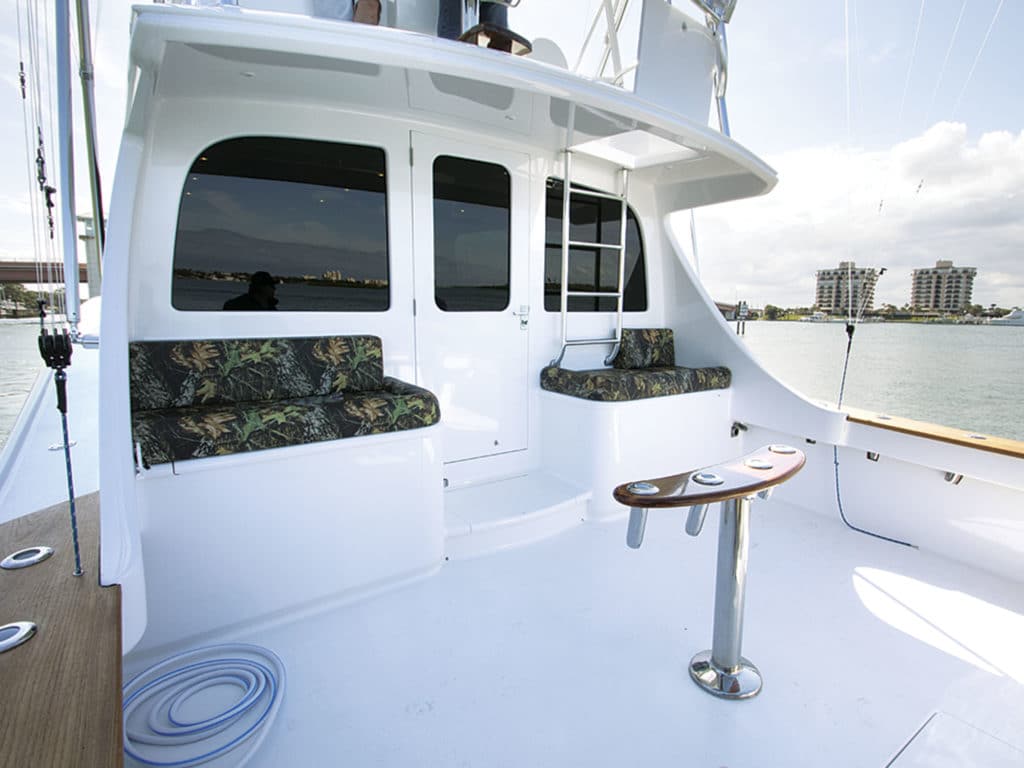
Performance
She was hot off a strong streak in the sailfish tournament circuit, so I was most excited to see how Grand Slam performed, especially the clean trolling wakes a single engine produces. Cruising out of Ponce Inlet, we were met with less than ideal conditions for a sea trial, but Grand Slam handled them beautifully. We continued our cruise at 26 knots, turning just over 2,000 rpm and burning only 48 gph. “She’s an extremely dry boat, and she proved herself wonderfully during some very sloppy conditions in the Pelican tournament,” comments Grubbs.
Pulling her back, Capt. Grubbs switched the C18A into slow-idle mode, and I could see barely any whitewash behind the boat at just a touch over 5 knots, an ideal speed for bait fishing. My only wish is that we had a spread of dink ballyhoo behind us.
I was even more impressed how Grand Slam performed in reverse. With one hand on the throttle and the other on the control for her oversize Vetus 12-inch hydraulic bow thruster, Grubbs spun her in a tight circle as if a sailfish were behind the boat. Even moving toward the starboard side of the cockpit — traditionally a challenge for single-screw boats — Grand Slam performed flawlessly and well beyond my expectations.
I’m truly excited to see what the future holds for Grand Slam on the tournament circuit — it’s only a matter of time before she lives up to her name.
